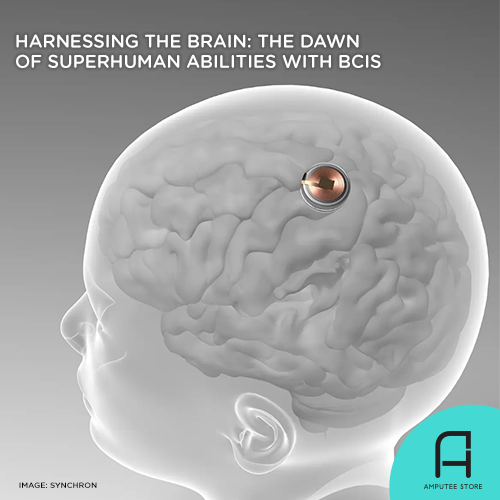Harnessing the Brain: The Dawn of Superhuman Abilities with BCIs
Over the last five decades, brain-computer interfaces (BCIs) have gradually garnered significant scientific interest. However, the past few years have witnessed notable progress in this field. Tech companies are developing versions of BCIs that could grant people superhuman abilities, especially when merged with prosthetics.

This article provides an overview of the latest advancements in BCIs, focusing on Elon Musk's Neuralink.
What is a brain-computer interface?
Brain-computer interfaces, or BCIs, directly connect the brain and an external device. They are designed to repair or enhance cognitive processes, sensory information, or movement production. These devices typically record and transmit signals through electrodes implanted directly into the brain.
The electrodes are small pieces of material that read and record electrical signals. In the case of BCIs, electrodes capture the brain’s pulses of electrical potential generated by firing neurons. In the brain, interconnected neurons communicate through these pulses to accomplish various tasks, such as storing memories. Early brain-computer interface experiments have permitted mobility-impaired or paralyzed patients to control robotic limbs using their thoughts.
Early BCI experiments have permitted mobility-impaired or paralyzed patients to control robotic limbs using their thoughts.
The future of BCIs
Neuralink, which Elon Musk owns, is one of the tech companies that have shown potential in developing brain-computer interfaces. In May, the US Food and Drug Administration approved Neuralink's application for human trials, and last September, the company opened applications for people with amyotrophic lateral sclerosis or quadriplegia to participate in the trial. Thousands of people have already signed up.
Musk co-founded Neuralink, a startup that focuses on developing brain-computer interface technology, back in 2016. The goal of Neuralink is to create a device that will allow people to use their thoughts to communicate, control devices, and even play games. While the company has yet to perform an implant surgery on a human, it is actively working towards achieving this goal. In the meantime, here’s what we know about the process.
The brain chip
The brain chip, roughly the size of a quarter, can record and transmit brain activity. The device comprises 64 ultra-thin threads extending out from the chip and totaling more than a thousand electrodes.
A robot inserts the device
Tiny threads, measuring only about 1/14th the diameter of a single strand of hair, are inserted into the brain. Due to their minuscule size, the threads must be implanted by a robot, which can handle them without damaging the brain's blood vessels. The robot stands at a height of eight feet and is specially designed to perform the delicate procedure.
A surgeon performs a craniectomy
A Bloomberg report reveals that before the robot implants the device, a human surgeon needs to perform a craniectomy first. This surgery takes a couple of hours. Once the surgeon removes a portion of the individual's skull, a robot inserts the device, which takes around 25 minutes. The implanted device acts as a replacement for the removed portion of the skull.
Battery life and charging
The Neuralink device is designed to be placed behind the ear of a human. Electrodes are then inserted into the brain while the device remains behind the ear. According to Bloomberg, the battery life currently lasts for a few hours, but Musk aims to extend it to 12 hours. Additionally, the device can be recharged using a customized baseball cap, as reported by the publication.
Animal testing
According to reports, Neuralink has performed over 150 implantation surgeries on test animal subjects such as sheep, pigs, and monkeys. The company has used robots for conducting these surgeries.
In 2021, Neuralink demonstrated its technology by showing how a monkey named Pager could play a video game using only its mind. Although Pager used a joystick to play the game, the controller was disconnected from the console, which means that the monkey was moving the cursor using the signals from its brain as its arm moved.
Medicare availability
If the human trials progress smoothly, the company intends to request FDA approval. They will also present a strong argument for the device to be included in the Medicare program, which is a government-funded health insurance program. This is essential to ensure the device is accessible to as many people as possible.











































































